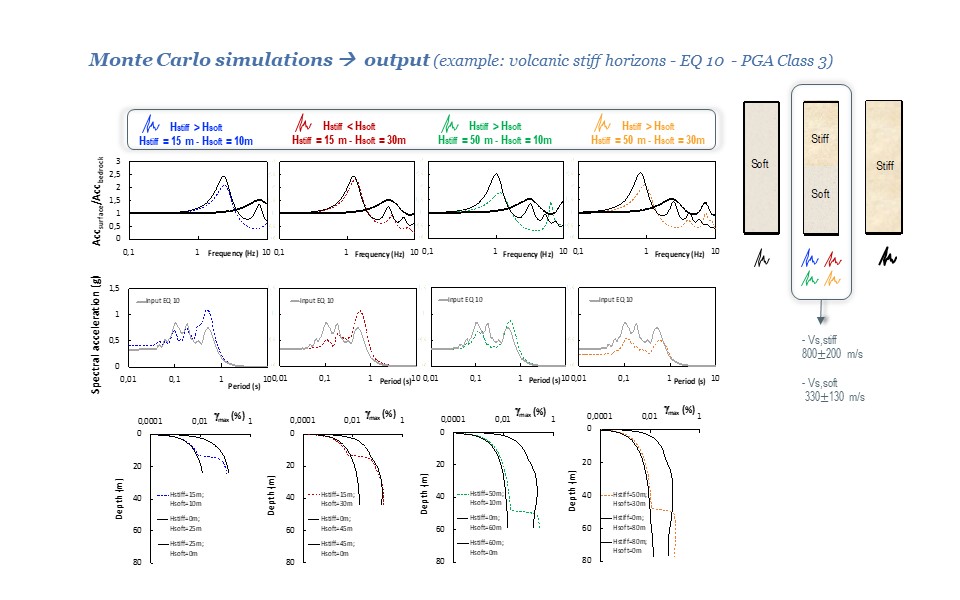
Effect of stiff-soft alternating layers in volcanic areas on seismic site response
- 25 Febbraio 2022
- Pericolosità, Pubblicazioni
Autori: Fabozzi S. 1, Catalano S. 2, Naso G. 3, Pagliaroli A. 4, Peronace E. 1, Porchia A. 1, Romagnoli G. 1, Moscatelli M 1
Affiliazioni:
1 Institute of Environmental Geology and Geoengineering. Rome, Italy
2 Department of Biological, Geological and Environmental Science, University of Catania, Italy
3 Department of Civil Protection. Rome, Italy
4 Department of Engineering and Geology – University of Chieti Pescara G. D’Annunzio, Italy
2021 EGU General Assembly 2021, online, 19–30 Apr 2021
Abstract
The seismic subsoil response in terms of amplification or attenuation of the ground motion is the result of a complex combination of factors, including the vertical subsoil heterogeneities. In volcanic areas in particular, the vertical subsoil heterogeneities are well identified by characteristic superposition of stiffer volcanic horizons on softer levels, giving rise to stiff-soft alternating layers, also in the form of multiple Vs inversions with the depth.
This condition is typical of sheet-like blankets of lava or pyroclastic deposits, extensively covering the sedimentary substratum, frequent in the peripheral areas of large basaltic stratovolcanos or in areas adjacent to large explosive acidic volcanic edifices.
The aim of the present work is to study the effect of such particular subsoil conditions on the seismic site response. With this end, in correspondence of volcanic areas identified by means of a preliminary geological screening in the Italian territory, subsoil properties relevant for seismic site response analyses were extracted from the Italian database of the seismic microzonation studies (DB-SMs in DPC, 2018), which is available at www.webms.it and is developed and mantained by CNR IGAG (National Research Council of Italy, Institute of Environmental Geology and Geoengineering, www.igag.cnr. it) on behalf of the Italian Department of Civil Protection (DPC) of the Presidency of Council of Ministers.
The collection of input data was used for an extensive one-dimensional numerical site response analyses, in order to evaluate the influence of stiffness inversion on ground shaking. In particular, different idealized subsoil 1D models of the identified geological areas were defined in terms of variation of layers thickness, shear wave velocity and nonlinearity. The effect of the variability of these parameters on the seismic site response was studied parametrically.

Parole chiave
CONTRATTO CONCERNENTE L’AFFIDAMENTO DI SERVIZI PER “PROGRAMMA PER IL SUPPORTO AL RAFFORZAMENTO DELLA GOVERNANCE IN MATERIA DI RIDUZIONE DEL RISCHIO SISMICO E VULCANICO AI FINI DI PROTEZIONE CIVILE NELL’AMBITO DEL PON GOVERNANCE E CAPACITÀ ISTITUZIONALE 2014-2020”– CIG 6980737E65 – CUP J59G16000160006
Copyright © 2017 - Progetto grafico e sviluppo Heap Design



